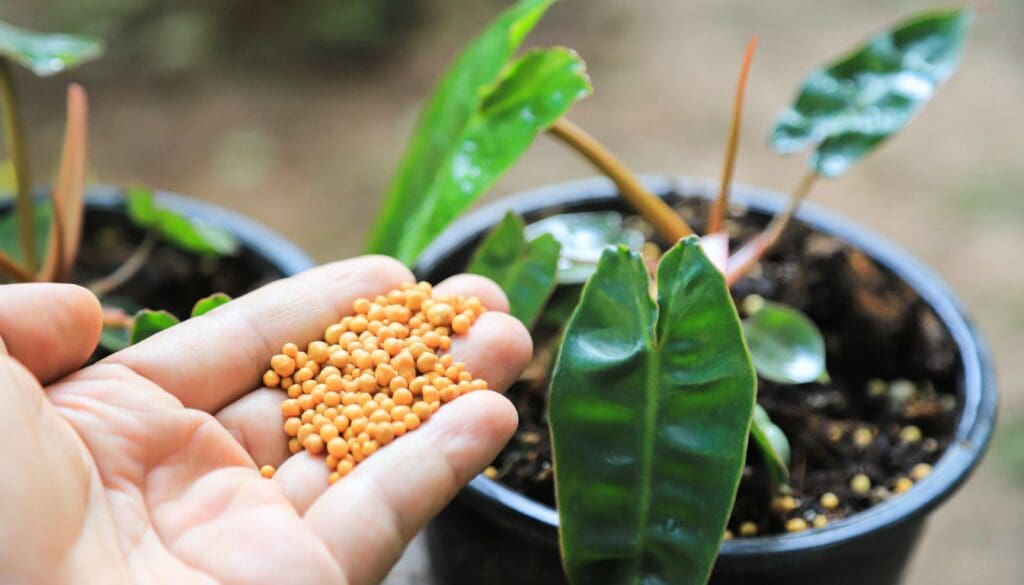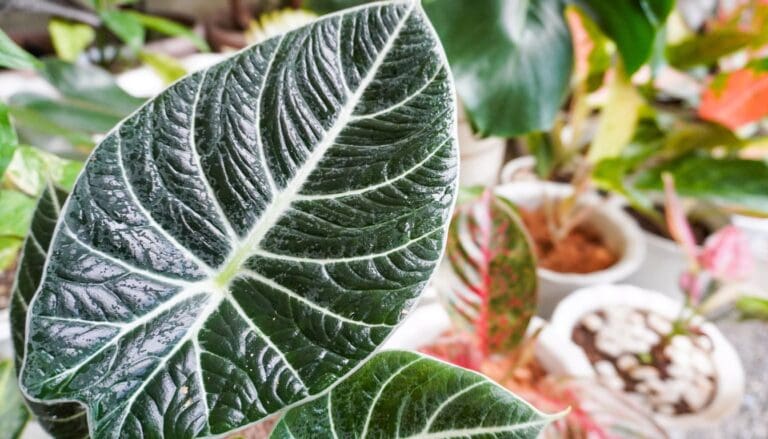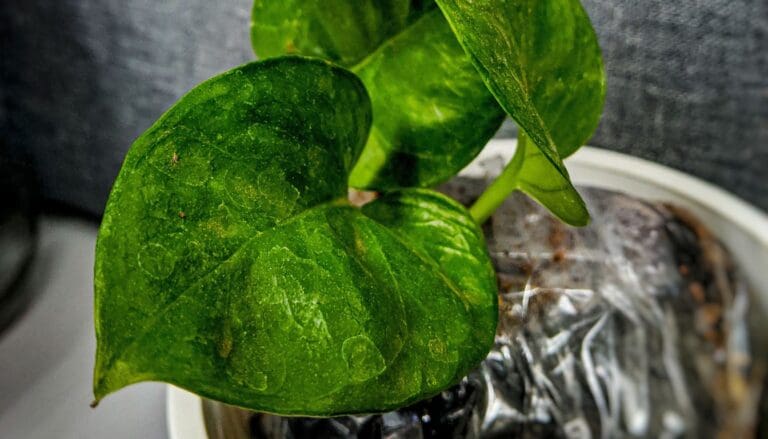Fertilizer For Philodendron: Best Fertilizer, Fertilizer Ratio, How Often & More!
Philodendrons are fast-growing plants that are versatile and resilient to different conditions. However, for a philodendron to grow fast, there must be a sufficient supply of nutrients that encourage growth, and fertilizers help add those nutrients to your philodendrons.
If you are a beginner with philodendrons, you must be wondering how to fertilize them correctly and what kind of fertilizer is best for philodendrons. Let’s find out.
Generally, philodendron thrives when dosed with a well-balanced fertilizer with an NPK ratio of 20:20:20. You can fertilize the philodendron once a month during the growing season. To avoid overfertilizing, consider diluting the fertilizer to half the recommended dosage.
There are different types of fertilizers available in the market that we will discuss in this article, and you can choose the type that you think would suit your philodendrons.
If you want to know everything about fertilizing your philodendrons, keep reading this article so you don’t make any mistakes.

Please note: Simplify Plants is reader-supported. Some links in the post are affiliate links and I get a commission from purchases made through links in the post.
Why is fertilizing your philodendron important?
In their natural habitats, philodendrons get nutrients in the soil naturally. Deposits like wood and humus make the soil nutrient-rich. However, when they are grown in pots, the soil loses its nutrients within a few months.
Water contains nutrients, but that is not sufficient for the plants. Fertilizers help to replenish the soil with nutrients that help in their growth.
If you want your philodendron to thrive and grow fast, you must provide the nutrients required for its growth.
If you don’t fertilize your philodendrons with a well-balanced fertilizer, the plants will have a nutrient deficiency. Some of the signs that indicate this are:
- Slow growth
- Leggy growth
- Weak roots
- Yellow or brown edges on leaves
- New leaves turn yellow and droop
If you find any such sign in your philodendrons, you must check if the fertilizer you are using is suitable for the philodendrons. And in case you are not using any fertilizer, you should look for a well-balanced one and start using it.
Fertilizers provide the required micronutrients and macronutrients that encourage growth and help the plant remain green and healthy.
Lack of fertilizers will result in slow growth, and the plant parts, such as roots, stems, and leaves, will weaken.
What nutrients do fertilizers contain?
Fertilizers contain different kinds of nutrients. Let’s understand all these in detail.
When discussing the NPK ratio, NPK represents the essential nutrients that plants need. NPK stands for nitrogen, phosphorus, and potassium.
Nitrogen is vital and helps in the growth and development of the plant. Phosphorus helps in root development, and potassium helps transfer nutrients to all plant parts.
Philodendron requires a fertilizer with an NPK ratio of 20:20:20. This means that the fertilizer contains 20% nitrogen, 20% phosphorus, and 20% potassium.
Other than this, the fertilizers contain micronutrients and macronutrients that include many other nutrients that the plants need.
NPK falls under the macronutrients, and plants need them the most. These help to boost growth in the plants.
Other macronutrients include Sulphur, magnesium, calcium, etc.
The fertilizers also contain micronutrients but in smaller quantities. This includes elements like copper, iron, zinc, etc.
Once you understand the nutrient content of the fertilizers, you can pick the right one for your philodendron.

Best fertilizer for philodendron
We have already discussed the nutrients that fertilizers contain. So when you select the best fertilizer for your philodendron, you will know which nutrients to look for and how they can help your plant.
We have already stated that philodendrons require a balanced fertilizer with a 20:20:20 NPK ratio. Some of my top picks are:
Let’s look at how these nutrients can help your philodendron.
| Nutrients | Role |
| Nitrogen | -Encourages root growth -Plays an important role in photosynthesis -Stimulates growth of leaves |
| Phosphorus | -Regulates water -Helps in root development |
| Potassium | -Transfers nutrients to all parts -Builds immunity of the plant -Makes the plant resilient |
Different fertilizers have different compositions, so choosing a suitable composition for your plant is crucial.
Now that you understand how fertilizers help your plant, let’s understand the types of fertilizers available in the market and which is the best for your philodendron.
Types of fertilizers
There are three types of fertilizers for you to choose from.
Granular fertilizers are mixed with the soil and added directly to the pot. These fertilizers are great for outdoor plants.
Granular fertilizers might not be ideal for the philodendron as they release all nutrients simultaneously, leading to overfertilization that can burn the roots.
Liquid fertilizers are the best for houseplants and are gaining popularity over the days.
Liquid fertilizers are used by diluting them in water. It is best to use half of the recommended dose for your philodendron. Fertilizing with a stronger dose can lead to leaf and root burn.
Slow-release fertilizers are similar to granular fertilizers, but they don’t release all the nutrients in one go.
These fertilizers release the nutrients slowly. A small amount of the fertilizer will get released whenever you water your plant. However, you cannot control the concentration of nutrients.
Among all these types, liquid fertilizer is ideal for philodendrons.
Fertilizers can also be divided into two other sections.
- Commercial fertilizers
- Homemade fertilizers
Commercial fertilizers are those that are found in the markets. Various brands are available, and you can purchase any of them based on your plant’s nutrient requirements.
The commercial fertilizers are selected mainly based on the NPK ratio. A well-balanced fertilizer will have the same ratio for the important nutrients: nitrogen, phosphorus, and potassium.
A fertilizer with an NPK ratio of 20:20:20 works best for all the houseplants that need a balanced fertilizer.
If you want to boost the growth of your philodendron, you can select a fertilizer with a higher nitrogen percentage.
You can also use homemade fertilizers if you don’t want to use commercial ones. However, you should be very careful while using these as you don’t know the composition of the nutrients in them.
Let’s check out some of the best homemade fertilizers.
Coffee: Coffee is an excellent source of Nitrogen. It also contains some amount of potassium and magnesium. You can use coffee by making a liquid fertilizer out of it for your philodendron. However, you should not do this excessively, as coffee increases the soil’s acidity.
Eggshell: You can grind eggshells and mix them with the soil while repotting your philodendron. These add calcium to the plant, which helps to develop a strong cellular structure.
Aquarium water: If you have an aquarium at your house, you can save the aquarium’s water instead of throwing it away. So whenever you change your aquarium’s water, you can add the previously used water to your philodendron. This adds nitrogen to the soil.
Compost as fertilizer for philodendron

Compost is a great organic way of fertilizing your philodendrons. It is made up of natural waste and organic material that is a rich fertilizer for your philodendrons.
Add a handful of compost to the soil and water the soil thoroughly to distribute the nutrients evenly in the soil.
The nutrients slowly get absorbed into the soil and make it nutritious for the plant. Adding compost can also have its disadvantages.
- Compost can sometimes give away a foul smell, so the soil of the philodendron can start smelling bad.
- The amounts of nutrients that go into the soil are not in your control for composting.
Adding a handful of compost to the soil can help, but it might not contain all the micro and macronutrients that the plants require.
You should not add compost too often to the soil. It is best to do it once every two months.
How much fertilizer does a philodendron need?
You should not fertilize your philodendron with a high dose as that can burn the plant and reduce its nutrient absorption ability.
This is the reason for using a half-strength dose by diluting the liquid fertilizer.
If you add compost, you can add a handful to the pot.
Make sure to water your philodendron thoroughly so that the nutrients can spread throughout the soil.
How often should I fertilize my philodendron?
The best time for fertilizing your philodendron plants is during spring. This is when the plants grow at their best and, therefore, require a lot of nutrition.
You can fertilize your philodendron once a month during the spring season, depending on the growth of your philodendron.
However, the frequency of fertilizing should be reduced in the fall, and you should avoid fertilizing in the winter season. The plant remains dormant in winter and does not require fertilizers.
Fertilizing during the winter season can burn the roots of the plant.
How to fertilize philodendron?

Fertilizing your philodendron is easy. You must choose the right fertilizer and follow these steps:
- Pick a suitable fertilizer and prepare half of the recommended dosage.
- Add the fertilizer to a gallon of water and use this water on your philodendrons.
- In the case of compost, add a handful to the soil. Avoid doing it too often. You can add it once in two months.
- Water your philodendron before and after fertilizing. If you add fertilizer to dry soil, it can make the plant dehydrated.
What happens if you over-fertilize your philodendron?
Over-fertilization can cause various problems, such as leaf burn and root burn in your philodendron.
If your philodendron is not doing well, even when you are fertilizing it adequately, you are probably overfertilizing it.
Some of the signs of over-fertilization are:
- Root burn
- Leaf burn
- Stunted growth
- Brown tips on leaves
- Excess fertilizer build-up on soil
If you want to fix these problems, you need to evaluate your fertilizing schedule and correct it.
Also, you should not fertilize with a heavy dose as that can contribute to these issues.
How to fix an over-fertilized philodendron?
It is better to avoid over-fertilizing than fixing it. However, if you have an over-fertilized philodendron, and the damage is not severe yet, you can fix the problem and save the plant.
You can follow these steps:
- Check for the signs of root and leaf burn on your philodendron.
- Prune the brown and burnt leaves.
- Scrape off the top one or two inches of soil and add fresh soil.
- Water your philodendron thoroughly to make sure that there is no leftover fertilizer in the soil.
- Repot the philodendron if it still doesn’t recover.
- Avoid fertilizing till the plant recovers completely and looks healthy again.
It is possible to save a philodendron from being over-fertilized by adding diluted fertilizer and not fertilizing it very often. With proper care, you can even fix an over-fertilized philodendron.
Final words
Philodendrons require fertilizer as they are fast-growing plants that need ample nutrients in the form of fertilizer.
If the philodendron doesn’t get enough nutrients, they will become weak and not show enough growth.
Fertilize your philodendron with a diluted, well-balanced 20:20:20 liquid fertilizer during the growing season. Consider fertilizing once a month and avoid fertilizing in winter.
Ref: Wikipedia.
Recommended Garden Supplies
| Product Image | Our Recommended Gardening Supplies | Check Offers! |
|---|---|---|
Top Top
Top
Top
Top
Top
Top
Top
Top | rePotme Houseplant and Tropical Classic Potting Soil Mix | Check Offer On Amazon |
 Top
Top
Top
Top
Top
Top
Top
Top | Espoma Organic Indoor Plant Food | Check Offer On Amazon |
 Top
Top
Top
Top
Top
Top
Top
Top | GooingTop LED Grow Light 6000K Full Spectrum Clip Plant Growing Lamp | Check Offer On Amazon |
 Top
Top
Top
Top
Top
Top
Top
Top | Soil Moisture Meter | Check Offer On Amazon |
 Top
Top
Top
Top
Top
Top
Top
Top | Govee Hygrometer Thermometer, Bluetooth Enabled! | Check Offer On Amazon |
 Top
Top | LEVOIT Humidifiers for Large Room(Best For Plants) | Check Offer On Amazon |
 Top
Top
Top
Top
Top
Top
Top
Top | Upgraded DIY Automatic Drip Irrigation Kit, 15 Potted Houseplants Support | Check Offer On Amazon |
 Top
Top
Top
Top
Top
Top
Top
Top | Stainless Steel Heavy Duty Gardening Tool Set | Check Offer On Amazon |
 Top
Top
Top
Top
Top
Top
Top
Top | Bonide Insecticidal Soap | Check Offer On Amazon |
 Top
Top
Top
Top
Top
Top
Top
Top | Bonide 32 oz Spray Neem Oil for Organic Gardening | Check Offer On Amazon |
 Top
Top
Top
Top
Top
Top
Top
Top | Garden Safe Fungicide | Check Offer On Amazon |






